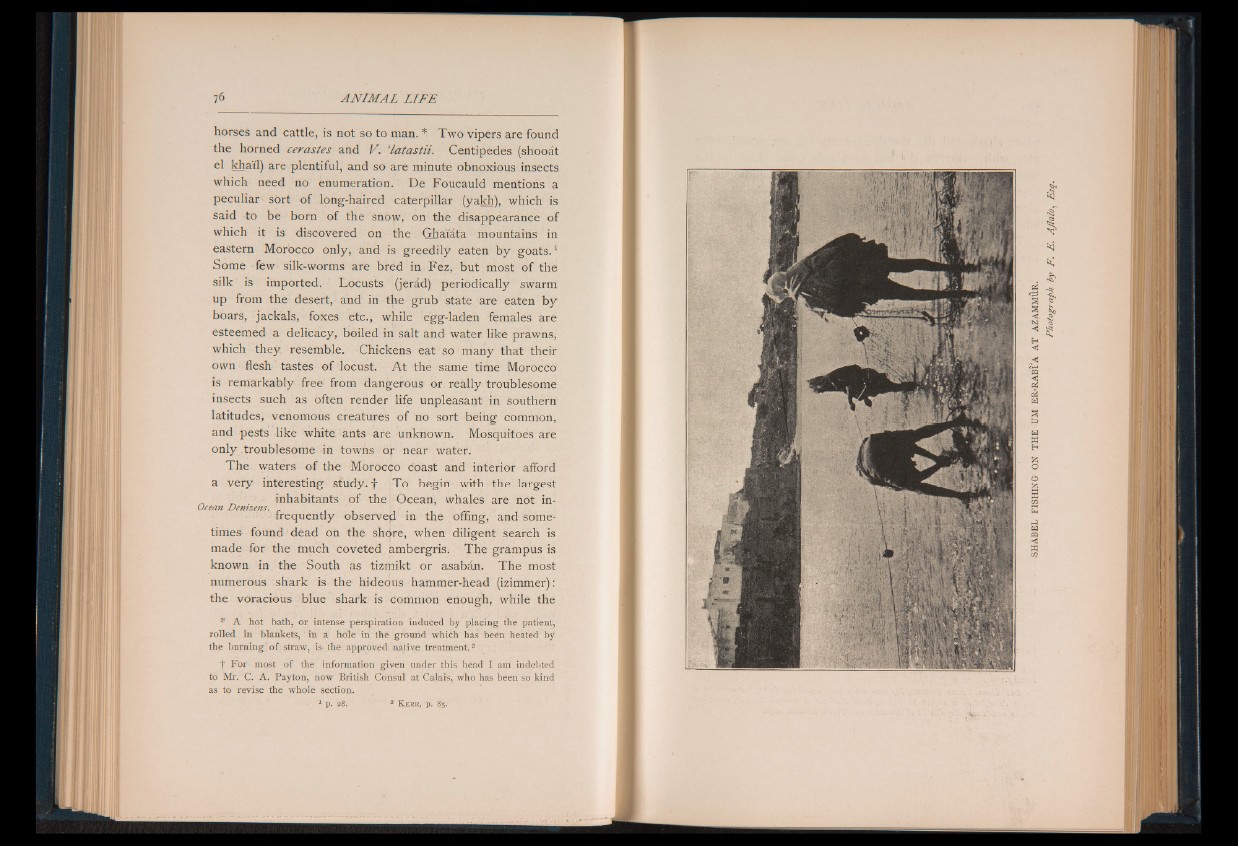
horses and cattle, is not so to man. * Two vipers are found
the horned cerastes and V. ‘¿atastii. Centipedes (shooat
el khai'l) are plentiful, and so are minute obnoxious insects
which need no enumeration. De Foucauld mentions a
peculiar sort of long-haired caterpillar (yakh), which is
said to be born of the snow, on the disappearance of
which it is discovered on the Ghaiata mountains in
eastern Morocco only, and is greedily eaten by goats.1
Some few silk-worms are bred in Fez, but most of the
silk is imported. Locusts (jerad) periodically swarm
up from the desert, and in the grub state are eaten by
boars, jackals, foxes etc., while egg-laden females are
esteemed a delicacy, boiled in salt and water like prawns,
which they resemble. Chickens eat so many that their
own flesh tastes of locust. A t the same time Morocco
is remarkably free from dangerous or really troublesome
insects such as often render life unpleasant in southern
latitudes, venomous creatures of no sort being common,
and pests like white ants are unknown. Mosquitoes are
only troublesome in towns or near water.
The waters of the Morocco coast and interior afford
a very interesting study, f To begin with the largest
„ . inhabitants o f the Ocean, whales are not in-
Ocean Denizens. .
frequently observed in the offing, and some-
times found dead on the shore, when diligent search is
made for the much coveted ambergris. The grampus is
known in the South as tizmikt or asaban. The most
numerous shark is the hideous hammer-head (izimmer):
the voracious blue shark is common enough, while the
* A hot bath, or intense perspiration induced by placing the patient,
rolled in blankets, in a hole in the ground which has been heated by
the burning'of straw, is-the approved native treatment.2
For most of the information given under this head I am indebted
to Mr. C. A. Payton, now British Consul at Calais, who has been so kind
as to revise the whole section.
1 p . 28 . I K e r r , p .